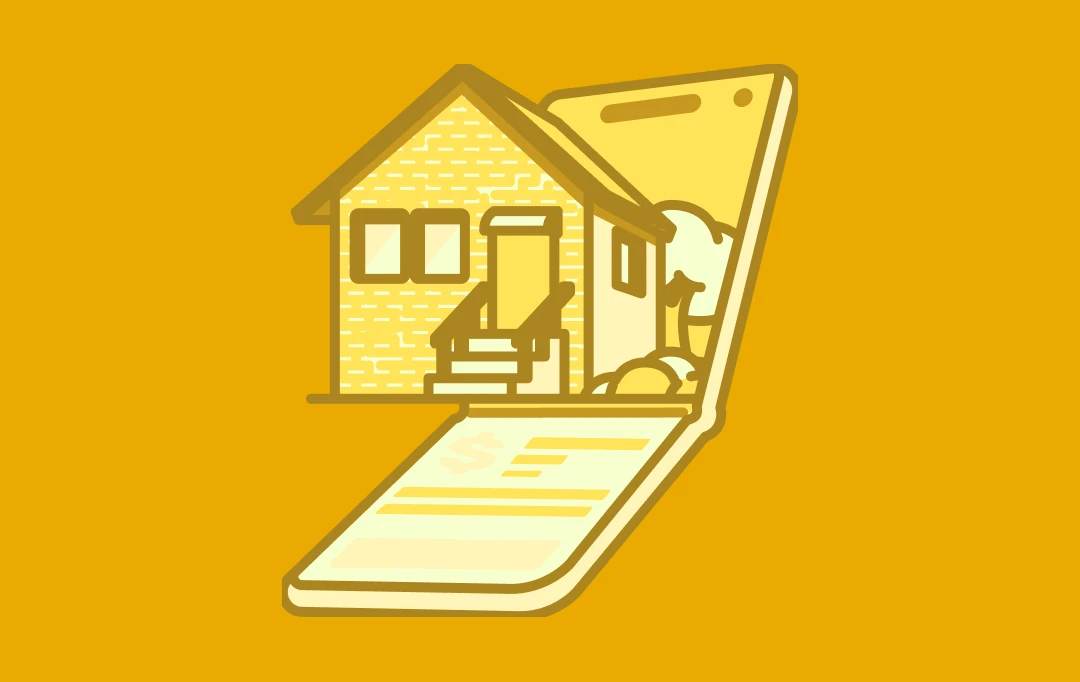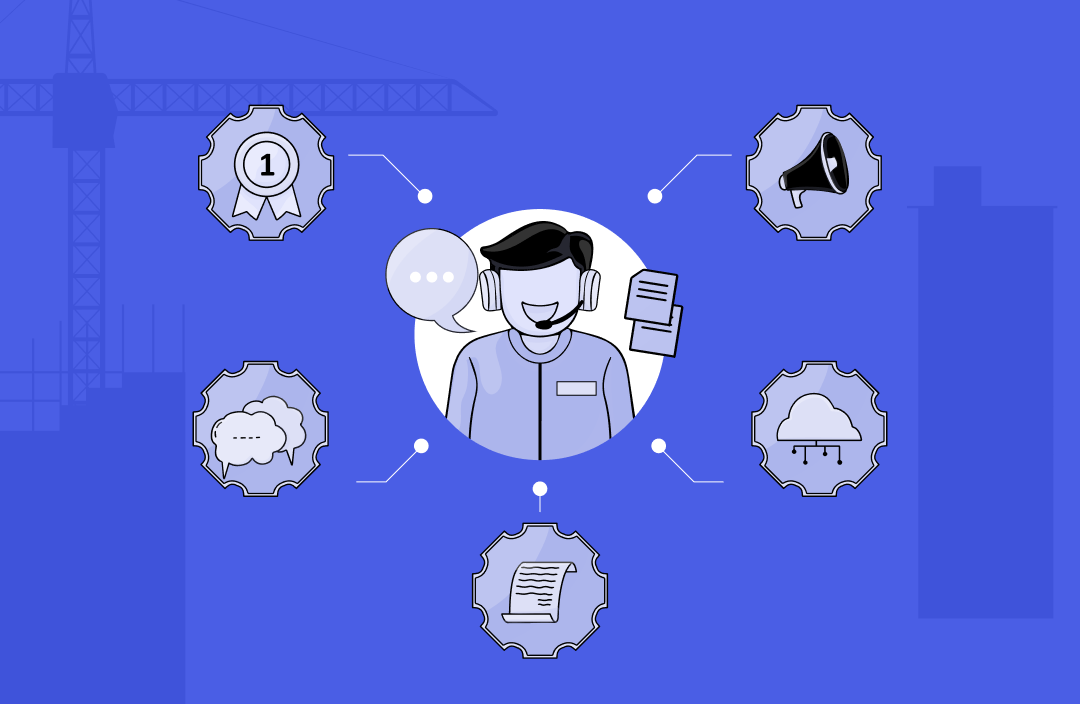Managing buildings has come a long way from simply ensuring the lights work and the heating is on. Today, technology is changing how facilities are run, making operations smoother, more energy-efficient, and responsive to the needs of occupants. From systems that automatically adjust lighting and temperature to maintenance that can be predicted before issues arise, smart building technologies are quietly revolutionizing facility management. These innovations aren’t just about convenience—they’re helping create safer, greener, and more adaptable spaces in the world around us.
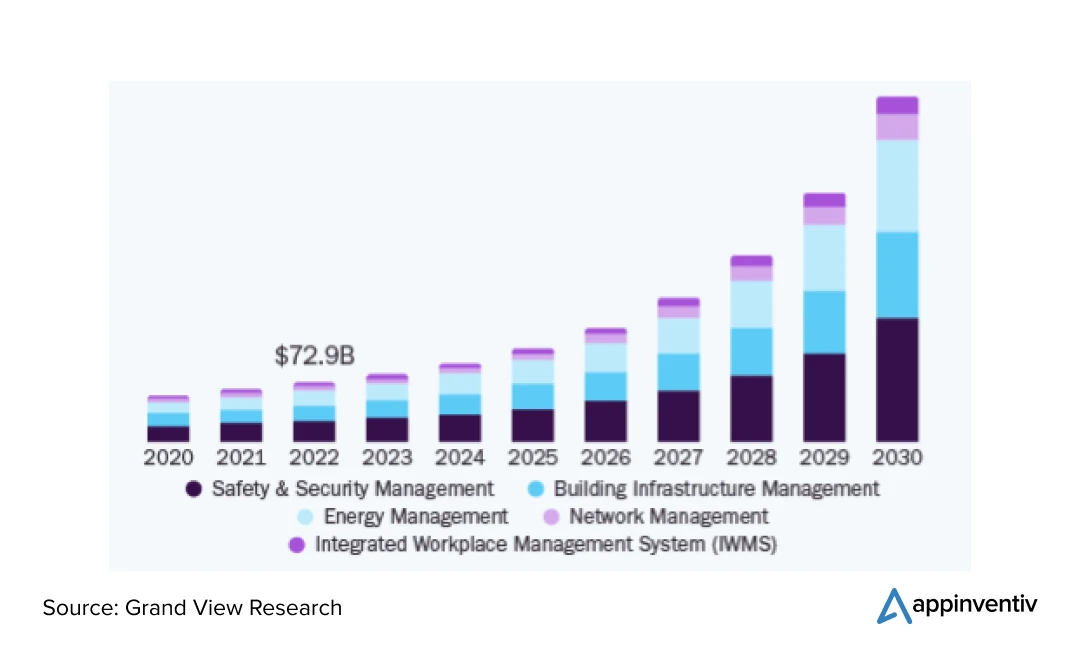
According to a report by Grand View Research, the global smart building market was valued at $108.00 billion in 2023 and is set for remarkable growth. The market is projected to grow at a compound annual growth rate (CAGR) of 28.5% from 2024 to 2030, reaching $570.02 billion by 2030. As the market continues to expand, businesses should invest in this technology to stay competitive and drive long-term sustainability.
In this article, we’ll dive into the world of smart building technology, exploring its benefits, diverse applications, and other valuable aspects that showcase its transformative potential in facility management and beyond.
Smart Building Technologies: Revolutionizing Facility Management
In today’s fast-paced world, smart building technologies are transforming facility management by enhancing operational efficiency, reducing costs, and improving occupant comfort. Here’s a closer look at ten innovative technologies that are significantly impacting this field, highlighting the various use cases of smart building technology.
- Internet of Things
- Building Automation
- Building Information Modeling
- Virtual Reality
- Artificial Intelligence and Machine Learning
- Aerial Drones
- Artificial Reality
Internet of Things (IoT)
The Internet of Things (IoT) revolutionizes facility management by connecting devices and systems to gather real-time data from building components such as lighting, HVAC, and security systems. This technology enables predictive maintenance, energy optimization, and improved operational efficiency.
Facility managers can monitor and control various building functions remotely, ensuring reduced downtime and operational costs while enhancing comfort and safety.
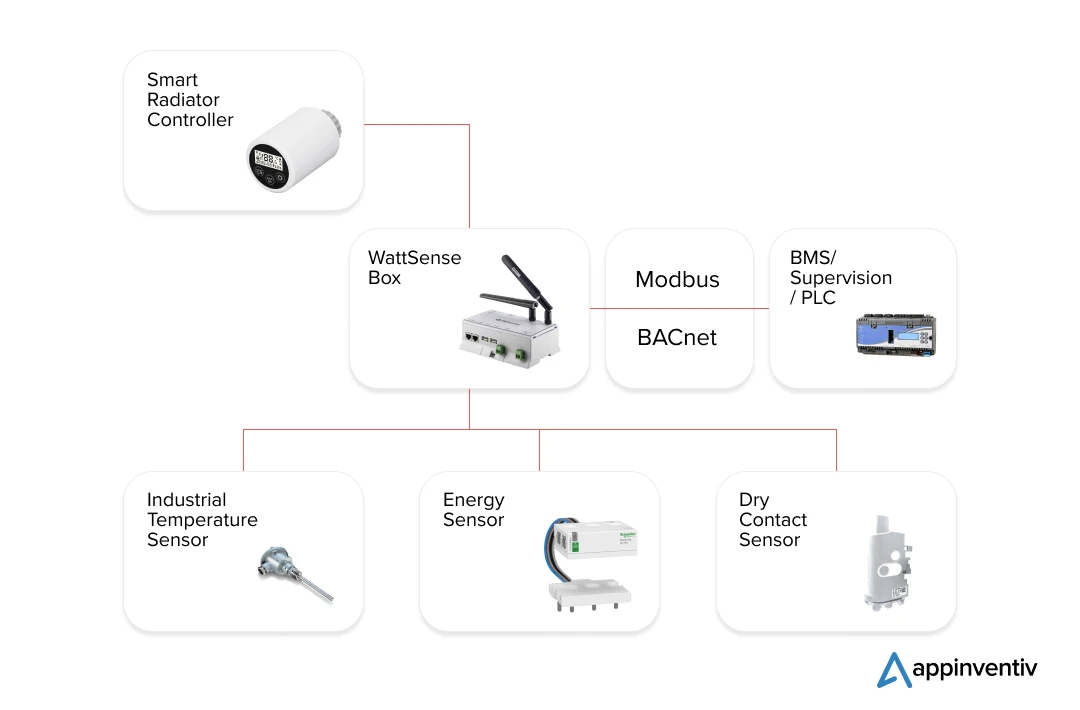
Valuable Components:
- Smart Sensors: IoT sensors monitor variables like temperature, humidity, occupancy, and air quality in real-time, allowing for dynamic control of HVAC, lighting, and security systems. Advanced sensors also enable predictive maintenance by detecting early signs of equipment failure.
- Edge Computing: Reduces latency by processing IoT data locally on-site rather than sending all data to the cloud, improving response times for critical building operations like fire safety or security breaches.
- Smart Gateways: Act as communication hubs that aggregate data from various IoT devices and communicate with building management systems (BMS) for seamless integration and control.
Building Automation Systems (BAS)
Building Automation Systems (BAS) integrate and automate various building systems such as lighting, HVAC, and security to create a centralized control platform. These systems optimize energy consumption, improve indoor air quality, and ensure occupant comfort by adjusting environmental factors in real-time.
For facility managers, BAS simplifies operations by providing comprehensive monitoring, making it easier to detect and address inefficiencies and potential system failures quickly.
Valuable Components:
- Open Protocol Systems: Systems like BACnet or Modbus allow the integration of different vendor technologies, creating an interoperable platform for managing lighting, HVAC, and security controls through a unified system.
- Energy Management Systems (EMS): These systems optimize energy use by tracking consumption patterns, automating HVAC schedules, and managing lighting based on occupancy, often resulting in energy savings of 10-30%.
- Smart Actuators: These are mechanical devices within the BAS that control heating, cooling, and ventilation systems, enabling automatic adjustments based on sensor inputs for improved energy efficiency.
Building Information Modeling (BIM)
Building Information Modeling (BIM) is a digital representation of a building’s physical and functional characteristics, offering a 3D model that helps facility managers track every aspect of a building’s infrastructure.
From initial design to daily maintenance, BIM provides a detailed visual and data-driven roadmap that improves project planning, asset management, and lifecycle maintenance. It enhances team communication, allowing facility managers to manage spaces more effectively and make data-driven decisions.
Valuable Components:
- 4D and 5D BIM: Goes beyond the standard 3D model by incorporating time (4D) and cost (5D) data into the model. This enables facility managers to predict project timelines and budgetary requirements during construction and maintenance phases.
- Clash Detection Tools: These tools identify and resolve conflicts between architectural, structural, and MEP (Mechanical, Electrical, Plumbing) systems during the design phase, preventing costly rework during construction.
- Data Integration with Facility Management Systems (FMS): BIM integrates with FMS platforms, linking asset information (such as part numbers, maintenance schedules, and warranties) directly into the model for better lifecycle management.
Virtual Reality (VR)
Virtual Reality (VR) technology is increasingly used in facility management for immersive building design and space planning.
Facility managers can use VR to visualize how spaces will function before they are built or modified, allowing for more informed decision-making. VR also assists in training staff, as it offers a risk-free environment to practice scenarios such as emergency responses or equipment handling, improving both safety and operational efficiency.
Valuable Components:
- Virtual Walkthroughs: VR technology allows facility managers to experience virtual walkthroughs of building designs before they are built, helping them identify layout issues or inefficiencies that could impact operations.
- Scenario Simulations: Facility managers can use VR to simulate emergency scenarios, such as fire evacuations, to train personnel and test building safety protocols in a controlled, risk-free environment.
- Collaborative Design Reviews: Multiple stakeholders can participate in real-time virtual design reviews, where changes to building plans can be visualized instantly, speeding up decision-making processes.
Artificial Intelligence and Machine Learning (AI/ML)
AI and Machine Learning transform smart buildings by enabling predictive analytics and automation. Facility managers can leverage AI-driven insights to predict equipment failures, optimize energy use, and enhance security protocols.
Machine learning algorithms continuously learn from building data to automate complex processes, from adjusting lighting and climate control based on occupancy patterns to detecting anomalies in building systems. This leads to more proactive management, reduced operational costs, and enhanced tenant satisfaction.
Valuable Components:
- Predictive Maintenance Algorithms: AI-driven algorithms analyze equipment performance data to predict failure points before they occur. Machine learning models continuously improve these predictions, reducing unplanned downtime and extending the lifespan of assets.
- Energy Optimization Systems: AI optimizes energy use by learning occupancy patterns, weather forecasts, and price fluctuations. These systems automatically adjust lighting, HVAC, and other systems to balance energy efficiency with occupant comfort.
- Smart Security Analytics: AI-powered video analytics and access control systems can detect security threats, unusual behaviors, or unauthorized access in real-time, ensuring faster response times in critical situations.
Aerial Drones
Aerial drones are becoming valuable tools for facility management, especially in large or complex buildings. These drones can conduct inspections of hard-to-reach areas such as rooftops, HVAC units, and facades, providing high-resolution imagery and thermal scans that help identify issues like leaks or structural damage.
Facility managers can use drones to enhance safety, reduce inspection time, and improve maintenance planning, minimizing disruptions to building operations.
Valuable Components:
- High-Resolution Imaging and Thermal Scanning: Drones with high-resolution cameras and thermal imaging sensors can perform detailed inspections of HVAC systems, roofs, and facades, detecting leaks, cracks, or insulation issues without human intervention.
- Automated Surveying and Mapping: Drones can autonomously map building perimeters and provide real-time data for 3D modeling, helping facility managers maintain accurate building layouts for future maintenance or expansion projects.
- Autonomous Flight Path Programming: With pre-programmed flight paths, drones can conduct routine inspections on schedule, significantly reducing inspection times for large or multi-story facilities while ensuring consistent data collection.
Augmented Reality (AR)
Augmented Reality (AR) reshapes facility management by overlaying digital information onto the physical world through smartphones, tablets, or AR glasses.
Facility managers can use AR to visualize building systems, such as wiring and plumbing within walls, making maintenance and repairs more efficient. AR also enhances on-the-job training by providing step-by-step guidance for technical tasks. It increases operational accuracy and reduces the likelihood of errors, improving overall facility performance.
Valuable Components:
- Live Overlay of Building Infrastructure: AR can project real-time information about hidden building systems (like wiring or plumbing) onto physical spaces, helping technicians quickly locate and resolve issues without disrupting operations.
- Interactive Maintenance Manuals: Facility managers and technicians can access AR-enabled digital manuals that provide step-by-step visual instructions for repairing complex systems like HVAC, reducing human error and speeding up repairs.
- Remote Assistance: Through AR devices, facility managers can collaborate with off-site experts who can view the issue in real-time and provide live guidance, leading to faster diagnosis and problem resolution.
Applications of Smart Business Technologies
After delving into the essential components of smart building technology and understanding how they drive efficiency and innovation, it’s time to dive deeper into the practical applications. Let’s now explore the detailed use cases that showcase the transformative impact of smart buildings across various industries.
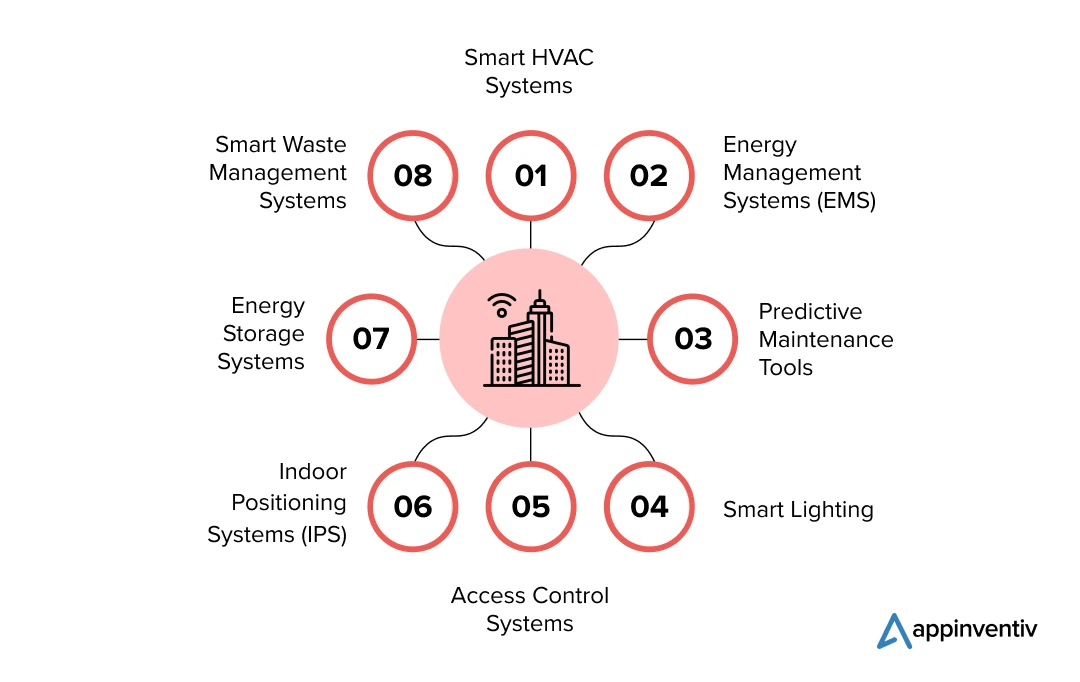
Smart HVAC Systems
Smart HVAC systems revolutionize climate control by automatically adjusting settings based on occupancy and external weather conditions. These systems utilize advanced algorithms to learn usage patterns and optimize energy consumption, ensuring maximum comfort for occupants. Remote access capabilities enable facility managers to monitor and control systems from anywhere, enhancing operational flexibility.
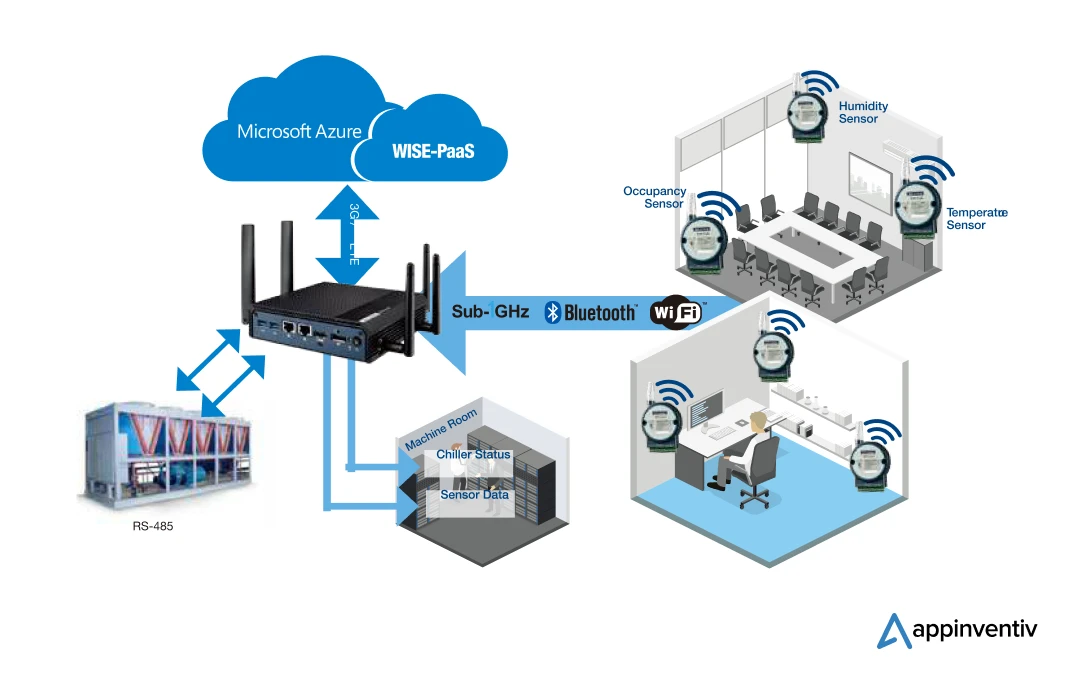
Key Features:
- Adaptive controls that learn occupancy patterns.
- Remote access for facility managers through mobile applications.
Energy Management Systems (EMS)
Energy Management Systems (EMS) are essential for optimizing energy consumption in smart building facility management. By analyzing energy usage patterns, EMS identifies inefficiencies and provides actionable insights. This proactive approach allows facility managers to implement energy-saving measures, leading to reduced operational costs and a smaller carbon footprint.
Key Features:
- Real-time data analytics for identifying energy inefficiencies.
- User-friendly dashboards for monitoring and reporting.
Building Automation Systems (BAS)
Building Automation Systems (BAS) integrate various building systems into a centralized control platform, streamlining facility management. With BAS, facility managers can easily monitor and control lighting, HVAC, and security systems from a single interface. Automation features, such as scheduling and pre-programmed responses, enhance efficiency and improve energy conservation.
Key Features:
- Centralized control of lighting, HVAC, and security systems.
- Automation and scheduling capabilities to optimize energy use.
Predictive Maintenance Tools
Predictive maintenance tools leverage data analytics and machine learning to forecast equipment maintenance needs, helping to prevent costly failures. By analyzing performance data, these tools identify potential issues before they escalate, allowing facility managers to schedule maintenance proactively. This approach minimizes downtime and extends the lifespan of building equipment.
Key Features:
- Machine learning algorithms to predict failures before they occur.
- Data-driven insights for scheduling maintenance tasks efficiently.
Smart Lighting
Smart lighting systems enhance energy efficiency and occupant comfort by adjusting brightness and color based on occupancy and time of day. These systems can automatically dim or brighten lights in response to real-time data, significantly reducing energy consumption during non-peak hours. Additionally, smart lighting contributes to improved safety and aesthetics within the building.
Key Features:
- Automated dimming and brightening based on real-time occupancy data.
- Energy-saving settings that reduce usage during non-peak hours.
Access Control Systems
Advanced access control systems improve security in smart building facility management to manage entry points. These systems often include mobile credentialing, allowing users to access facilities using smartphones or key cards. Integration with surveillance systems enhances safety by providing real-time monitoring and alerts for unauthorized access.
Key Features:
- Mobile credentialing for secure and convenient access.
- Integration with surveillance systems for enhanced safety.
Indoor Positioning Systems (IPS)
Indoor Positioning Systems (IPS) utilize GPS-like technology to help users navigate large buildings. These systems provide real-time location tracking for equipment and personnel, enhancing operational efficiency and safety. Interactive maps and navigation aids improve user experience, especially in complex facilities such as hospitals and universities.
Key Features:
- Real-time location tracking of equipment and personnel.
- Interactive maps for improved navigation in large facilities.
Energy Storage Systems
Energy storage systems are integral to optimizing energy usage in smart building facility management by storing excess energy generated from renewable sources, such as solar panels. These systems enable buildings to use stored energy during peak demand times, reducing reliance on the grid and minimizing energy costs. Automated energy distribution enhances operational efficiency and sustainability.
Key Features:
- Integration with renewable energy sources like solar panels.
- Automated energy distribution to optimize usage during peak times.
Smart Waste Management Systems
Smart waste management systems utilize IoT to optimize waste collection and recycling processes in buildings. By equipping bins with sensors that monitor waste levels, facility managers can schedule pickups more efficiently, reducing operational costs. Data analytics also help improve recycling rates and minimize environmental impact.
Key Features:
- IoT-enabled bins that monitor waste levels and schedule pickups.
- Data analytics for improving recycling rates and reducing waste disposal costs.
Benefits of Smart Building Technologies: Harnessing Innovation for a Smarter, More Sustainable Future
Adopting smart building technologies empowers businesses to improve sustainability, streamline facility management, and create more comfortable, efficient environments for occupants. By integrating advanced systems, companies can future-proof their operations, enhance safety, and drive cost-effective maintenance. Let’s dive into smart building technologies and discover their impact on transforming how facilities are managed and operated.
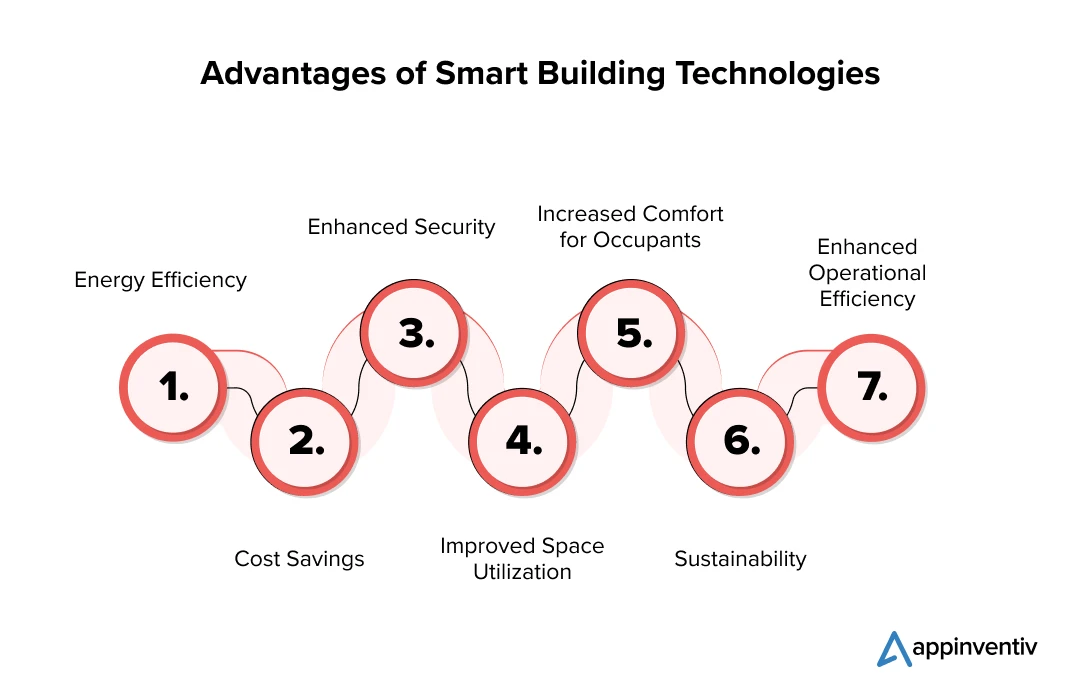
Energy Efficiency
Smart building technologies significantly improve energy efficiency using sensors, automation, and real-time data analysis. For instance, motion sensors can detect when rooms are unoccupied and automatically adjust lighting, heating, or cooling systems to conserve energy.
Smart thermostats and advanced energy management systems further optimize HVAC usage based on environmental factors such as weather conditions or peak energy hours. These features reduce energy wastage and help achieve sustainability goals by lowering carbon footprints and minimizing resource consumption over time.
Cost Savings
Integrating smart technologies leads to long-term savings by reducing operational expenses across various building functions. Automated systems like smart lighting and HVAC operate more efficiently, consuming less energy and reducing utility bills.
Furthermore, predictive maintenance technologies prevent equipment failures by alerting facility managers to potential issues before they become costly repairs.
This minimizes downtime and avoids expensive emergency repairs, extending the life of critical infrastructure and lowering maintenance costs. Over time, these cumulative savings contribute to a more financially efficient operation, as evidenced by smart building technology cost-benefit analyses.
Enhanced Security
Implementing smart building technology for facility management offers robust security measures, combining biometric access control, facial recognition, and real-time surveillance cameras.
These systems can detect unusual activities and trigger immediate alerts to security personnel or building occupants, enhancing safety and responsiveness to threats.
Smart building platforms integrate seamlessly with emergency management protocols, allowing for automated lockdowns or evacuations in critical situations. By constantly monitoring the premises, these advanced systems reduce the risk of theft, vandalism, or unauthorized access, ensuring a secure environment for occupants and assets.
Improved Space Utilization
Smart buildings help organizations make the most of their available space by using occupancy sensors and data analytics to monitor how spaces are used.
For example, meeting rooms that are consistently underutilized can be repurposed, while overcrowded areas can be expanded or reorganized to enhance productivity. By tracking real-time occupancy patterns, smart building platforms allow for dynamic space allocation based on current needs.
This leads to more efficient use of square footage, reduces the need for additional real estate investments, and ensures that building layouts are optimized for employee comfort and performance.
Increased Comfort for Occupants
Smart building technologies enhance occupant comfort by enabling personalized control over various environmental factors. Employees can adjust lighting, temperature, and air quality in their workspaces, creating a tailored environment suited to their preferences. Automated systems ensure that air quality, humidity, and ventilation remain healthy, promoting wellness.
These technologies also help maintain a consistent temperature throughout the building, ensuring employees are comfortable regardless of location. A relaxed work environment leads to greater job satisfaction, reduced absenteeism, and improved overall productivity.
Prioritized Sustainability
Sustainability is a key advantage of smart building facility management, as they are designed to reduce environmental impact through efficient use of energy and resources.
Smart water management systems, for instance, can detect leaks, optimize irrigation, and reduce water waste, while energy-efficient lighting and HVAC systems minimize carbon emissions. Smart waste management solutions enable better recycling practices, and green building certifications such as LEED (Leadership in Energy and Environmental Design) are more achievable using smart technologies.
These sustainability efforts contribute to global environmental goals and enhance the building’s reputation as eco-friendly, which can be a competitive advantage.
Enhanced Operational Efficiency
Implementing smart building technology for facility management automates routine tasks and provides real-time insights into operations. For example, automated lighting systems adjust based on natural light levels, occupancy sensors help optimize cleaning schedules by identifying high-traffic areas, and energy management systems balance power consumption during peak hours.
This automation reduces manual intervention, allowing building managers to focus on more strategic initiatives. Real-time data dashboards also provide valuable insights into building performance, enabling faster decision-making and continuous optimization of building systems, which boosts overall operational efficiency.
How to Develop Smart Building Technologies Solutions
Developing smart buildings technology solutions requires a well-structured approach, comprehensive research, and various critical elements that empower businesses to build effective and high-performing systems. Let’s explore the journey!
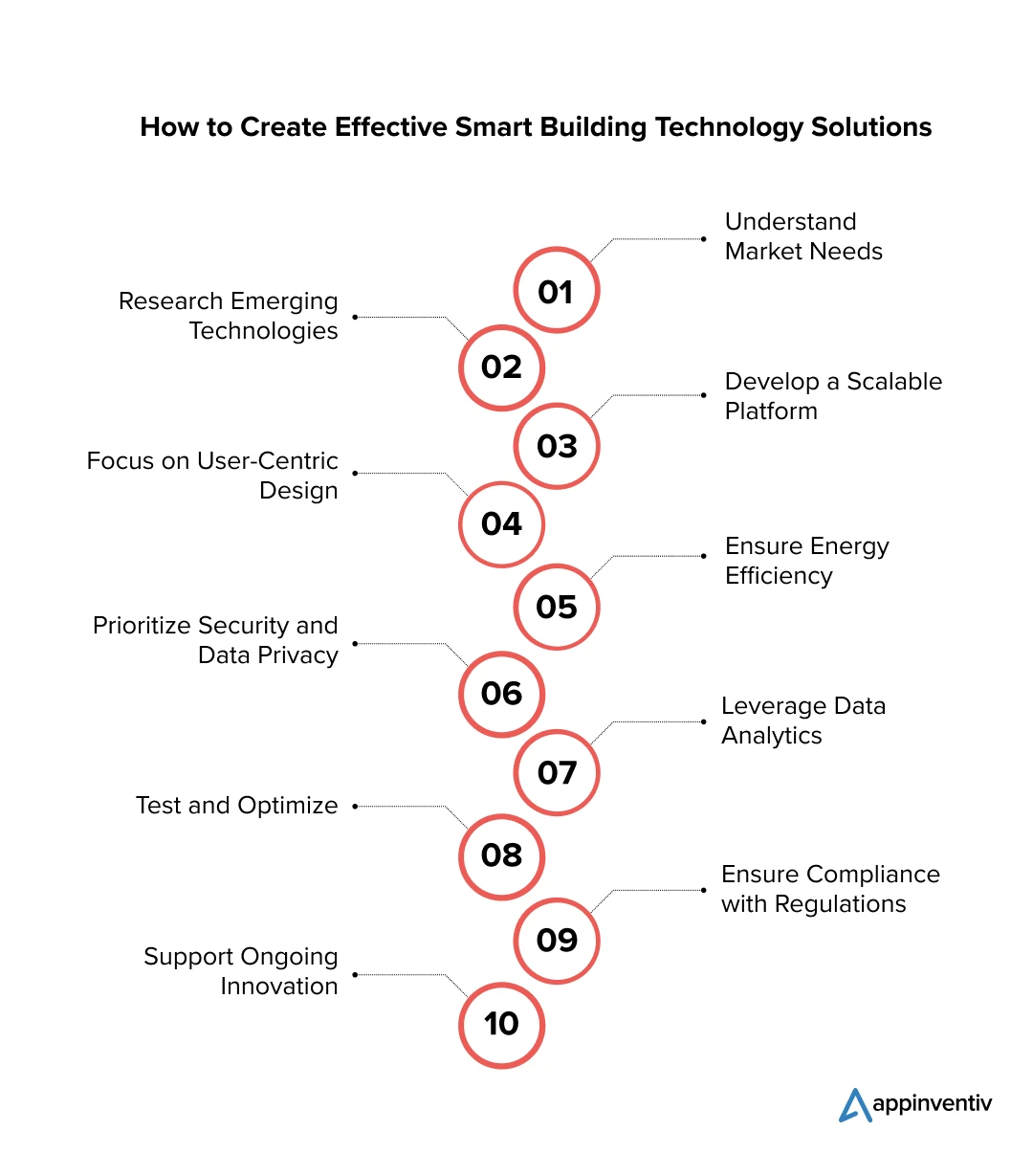
Understand Market Needs
Begin by identifying the specific needs of the facility management industry. Analyze energy efficiency, security, and operational automation challenges to pinpoint where smart building technologies can provide solutions.
Research Emerging Technologies
Stay updated on cutting-edge technologies like IoT sensors, AI-powered building systems, smart HVAC, and energy management solutions. This will help you select the best tools and technologies to integrate into your solution.
Develop a Scalable Platform
Create a smart building platform that can handle multiple smart devices and systems, ensuring seamless integration. Scalability is key to accommodating growing infrastructure needs and adding new technologies.
Focus on User-Centric Design
Design intuitive interfaces that allow facility managers to control and monitor systems easily. A user-friendly dashboard can simplify the management of heating, lighting, security, and energy systems, improving adoption and effectiveness.
Ensure Energy Efficiency
Incorporate energy-efficient technologies like smart lighting systems, automated climate control, and energy monitoring tools. This will optimize building operations and help companies reduce costs and carbon footprints.
Prioritize Security and Data Privacy
Strong cybersecurity measures are essential as smart building facility management relies on interconnected systems. Implement robust data encryption and secure communication protocols to protect sensitive information and ensure system integrity.
Leverage Data Analytics
Use AI and machine learning to analyze smart sensor and device data. This enables predictive maintenance, efficient resource allocation, and real-time decision-making for building operations.
Test and Optimize
Conduct thorough testing in real-world environments to ensure all systems work seamlessly. Continuously gather feedback from users and facility managers to optimize the technology and address any performance or usability issues.
Ensure Compliance with Regulations
Adhere to industry standards and local regulations concerning building codes, energy efficiency, and safety. Compliance is critical to avoiding legal issues and ensuring the long-term success of your smart building solution.
Support Ongoing Innovation
Keep evolving your smart buildings technology solutions by staying informed about AI, IoT, and automation advancements. Continuous innovation ensures your solutions remain competitive and adaptable to future smart building trends.

Smart Building Features: Pioneering the Next Generation of Intelligent Spaces
Smart building features integrate advanced technology to enhance efficiency, safety, and comfort. Here are some features of intelligent buildings commonly found in smart buildings:
Integrated Building Management Platforms
Comprehensive software solutions that combine multiple building systems (lighting, HVAC, security) into a single interface for easier management and monitoring.
Augmented Reality (AR) for Maintenance and Management
AR tools help facility managers visualize system layouts, conduct maintenance, and provide more immersive training for staff.
Smart Water Management Systems
Technologies that monitor and control water usage detect leaks and manage irrigation systems to conserve water and reduce waste.
Smart Appliances
Devices like refrigerators, coffee makers, and washing machines can be controlled remotely and optimized for energy efficiency.
Distributed Energy Resources (DER) Management
Systems that enable buildings to manage local energy generation (solar, wind) and consumption, improving energy independence and resilience.
Air Quality Monitoring Systems
Sensors that track indoor air quality metrics (CO2 levels, VOCs, particulate matter) to ensure a healthy environment for occupants.
Flexible Workspace Solutions
Technologies that support hot-desking and dynamic workspaces by allowing employees to book desks or meeting rooms through apps based on availability.
Smart Glass/Window Technology
Windows that can change tint or opacity based on sunlight exposure to optimize natural light and temperature control.
Demand Response Systems
Technologies that enable buildings to reduce or shift their energy usage during peak demand periods, often in response to utility signals, provide cost savings and grid support.
Digital Twin Technology
Virtual replicas of physical buildings allow for real-time monitoring, simulation, and building performance analysis, enhancing decision-making and operational efficiency.
Telematics for Fleet Management
If the building manages a fleet (e.g., delivery vehicles), telematics can optimize routes, monitor vehicle performance, and enhance overall fleet efficiency.
Voice-Activated Controls
Integration of voice recognition technology for hands-free control of various building systems, improving accessibility and convenience.
Challenges of Leveraging Smart Building Innovations
Businesses adopting smart building technology face several considerations, including privacy, data security, and inequality concerns. Navigating these challenges is crucial to ensure the technology is implemented responsibly and ethically.
- Challenge: Integrating IoT devices in smart building connectivity raises significant data security and privacy concerns, leading to potential breaches.
Solution: Implement strong encryption protocols and multi-factor authentication for all IoT devices within the building infrastructure. Regularly update software and conduct security audits to identify vulnerabilities. Collaborate with cybersecurity experts to ensure that data is protected throughout its lifecycle.
- Challenge: Intelligent building technology often comes with high upfront costs, making it inaccessible for smaller businesses or budget-conscious organizations.
Solution: Consider phased implementation of smart technologies, starting with cost-effective solutions that provide immediate benefits of smart building technology. Leverage government grants or green building incentives to offset initial expenses. Additionally, prioritize technologies that deliver a quick return on investment, such as energy-efficient lighting and HVAC systems.
- Challenge: A lack of interoperability between different smart building systems leads to inefficiencies and complications in managing multiple technologies.
Solution: Choose intelligent building technology that adheres to open standards and are compatible with various systems. Partner with vendors offering comprehensive integration services to create a unified platform. Regularly evaluate and update systems to ensure compatibility and future-proofing.
- Challenge: The rapid pace of innovation in smart building technology can overwhelm building managers and occupants, leading to resistance to adoption.
Solution: Invest in training programs for building managers and occupants to ensure a smooth transition. Provide ongoing support and resources to educate users on maximizing the benefits of smart building technology. Start with small pilot projects to demonstrate value and build trust among stakeholders.
- Challenge: The complexity of managing energy consumption in smart buildings can lead to underutilization of energy-saving features.
Solution: Implement AI-driven energy management software systems that optimize energy usage based on real-time data. Ensure that these systems are user-friendly and provide clear insights into energy-saving opportunities. Train facility managers to use these tools effectively, maximizing their impact.
Emerging Trends in Smart Building Technology
For a unique and forward-looking perspective on smart building technologies, let’s delve into some emerging trends in smart building technology that are either in their infancy or represent innovative extensions of existing technologies:
Quantum Computing for Building Optimization
While quantum computing is still in its early stages, its application in smart buildings could revolutionize optimization algorithms. Quantum processors could handle immense amounts of data from IoT sensors, energy systems, and occupant preferences, performing calculations far beyond the capabilities of current systems.
This could lead to unprecedented building efficiency, predictive maintenance, and occupant comfort by instantly modeling complex scenarios, such as weather patterns, energy demand, and system performance in real-time.
Biomimetic Building Skins
Biomimicry, which draws inspiration from nature to solve complex problems, is pushing boundaries in smart buildings. Future buildings could have adaptive skins that adapt to environmental conditions like natural organisms. These skins would be able to self-heal, control light transmission, and modulate temperature based on external factors.
For example, inspired by a reptile’s ability to regulate body temperature, these facades could open and close microscopic pores to manage ventilation and solar gain, dramatically improving energy efficiency without complex HVAC systems.
Carbon-Negative Buildings
While net-zero energy buildings are becoming more common, the next frontier is carbon-negative buildings that remove more CO2 from the atmosphere than they produce over their lifecycle.
These buildings will combine advanced construction materials, such as carbon-capturing concrete, with AI-driven energy systems and renewable energy harvesting. Using materials like algae-based façades or “living walls” that absorb CO2 could allow buildings to sequester carbon actively.
This approach represents one of the exciting smart building trends shaping the future of sustainable architecture.
Harness the Potential of Smart Buildings with Appinventiv’s AI Technologies Services
Appinventiv is a leading construction software development company specializing in creating innovative solutions for the evolving construction industry needs. With expertise in smart building technology, we deliver custom-built platforms that enhance operational efficiency, reduce energy consumption, and streamline facility management.
Our AI technologies integrate IoT, AI, and big data analytics to provide real-time monitoring, automation, and predictive maintenance, empowering businesses to embrace the future of smart buildings. By partnering with Appinventiv, you can unlock the full potential of smart infrastructure and revolutionize how your facilities are managed.
FAQs
Q. What is smart building technology?
A. Smart building technology refers to systems and devices that use sensors, automation, and the Internet of Things (IoT) to monitor, control, and optimize a building’s infrastructure, such as lighting, heating, ventilation, security, and energy management. These technologies are designed to improve energy efficiency, comfort, and overall building performance by automatically adjusting settings based on real-time data.
Q. What are the different types of smart buildings?
A. Smart buildings can be categorized into various types based on design and sustainability features. Sustainable buildings minimize environmental impact through resource efficiency. Living buildings are self-sufficient and regenerative, producing more energy than they consume.
Passive houses maintain comfortable temperatures with minimal energy input through superior insulation. Positive energy buildings generate more energy than they use, while net zero energy buildings balance energy consumed and produced over a year.
Zero-carbon buildings aim for net-zero energy and minimize greenhouse gas emissions. Lastly, resilient buildings are designed to withstand environmental stresses, ensuring safety and functionality.
Q. What is the future of smart building technology for facility management?
A. The future of smart building technology for facility management lies in the deeper integration of AI, machine learning, and predictive analytics. Facility managers can proactively address maintenance needs, optimize energy consumption, and improve the health and safety of occupants by leveraging real-time data.
Automation, remote monitoring, and enhanced connectivity between building systems will streamline operations, reduce costs, and lead to more sustainable building management. Moreover, smart buildings are expected to support the rise of green initiatives and carbon-neutral goals.
Q. What are the key components of a smart building system?
A. The key components of a smart building system include:
- Sensors and IoT Devices: These gather real-time data on temperature, lighting, occupancy, air quality, and energy use.
- Building Management System (BMS): A centralized platform that controls and monitors the building’s operations, such as HVAC, lighting, and security systems.
- Connectivity and Network Infrastructure: This enables communication between devices, sensors, and management systems using Wi-Fi, Ethernet, or wireless protocols.
- Automation and Control Systems: These systems automate lighting adjustments, HVAC regulation, and energy optimization based on data and pre-set rules.
- Energy Management Systems (EMS): Designed to optimize energy usage, monitor power consumption, and reduce energy costs.
- Security Systems: Smart surveillance, access control, and alarm systems ensure safety while integrating with other building systems.
- AI and Analytics Platforms: These analyze data from IoT devices to provide insights for predictive maintenance, energy optimization, and efficient building management.
Each component works together to make smart building facility management more efficient, secure, and comfortable for occupants.
Product Development & Engineering
IT Managed & Outsourcing
Consulting Services
Data Services
Didn't find what you're looking for? Let us know your needs, and we'll tailor a solution just for you.

















